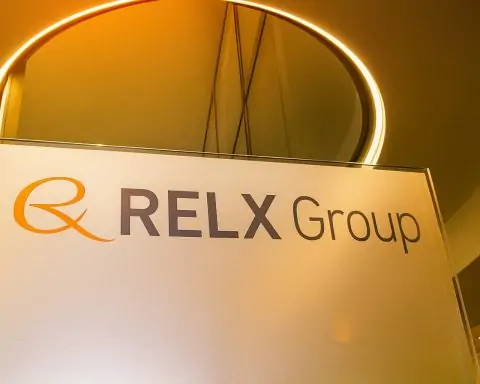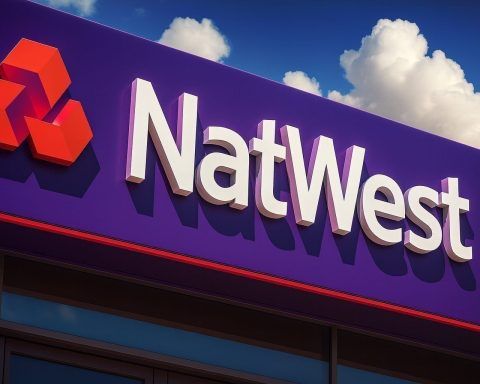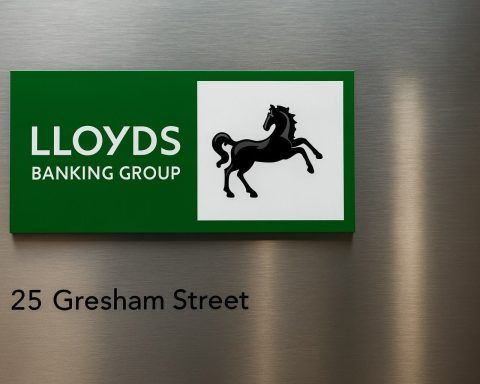Silver Price Update for November 3, 2025
- Silver Near 14-Year High: The spot price of silver is hovering around $48–$49 per ounce as of November 3, 2025 [1], just shy of its all-time nominal high (~$53.60 reached in mid-October) [2]. This marks a dramatic surge of roughly 70–75% year-to-date, the strongest rally since 2011 [3].
- Recent Rally and Pullback: Silver soared to record levels in early October amid a safe-haven buying frenzy and then eased back slightly in late October. It briefly breached $53/oz on supply tightness and geopolitical jitters [4], then pulled back to the high-$40s before rebounding. As of Nov 3, it’s up ~1% on the day and consolidating just below the psychological $50 barrier [5].
- Macroeconomic Boost:Federal Reserve rate cuts and economic uncertainty have fueled silver’s rise. The Fed’s quarter-point rate cut in late October and hints at a policy pause have pressured the U.S. dollar and bolstered precious metals [6] [7]. Investors are flocking to silver as an inflation hedge and safe haven amid persistent inflation, a weakening dollar, and even a U.S. government shutdown scare [8].
- Geopolitical and Demand Drivers:Geopolitical tensions – notably U.S.-China trade disputes – and robust industrial demand are adding upside pressure. A recent U.S.-China summit achieved only modest trade progress [9], keeping uncertainty elevated. Meanwhile, industrial consumption (for solar panels, electronics, electric vehicles, etc.) is at record highs, contributing to a fifth consecutive global silver supply deficit [10]. Physical silver supplies are tight – London silver lease rates spiked above 30% (normally ~0%) due to scarce available metal [11] [12].
- Expert Bullish Forecasts: Many analysts are turning bullish on silver’s outlook. Some predict that once silver decisively clears $50, it could climb toward $75 or even $100 in the coming years [13] [14]. Major banks echo this optimism: for example, Bank of America projects prices peaking around $65 in 2026 [15]. However, experts also caution that silver’s dual role (precious metal vs. industrial commodity) could limit how fast it rises – for instance, high prices could unlock more scrap supply (old silverware, recycled metal) and dampen a runaway spike [16] [17].
- Related Investments Surging: Silver’s rally is lifting related assets. Silver futures on COMEX are trading near multi-year highs alongside spot prices. The largest silver exchange-traded fund, iShares Silver Trust (SLV), has seen strong inflows as investors seek exposure. Silver mining stocks have skyrocketed: Pan American Silver Corp’s stock jumped ~58% in Q2 alone and is up substantially this year [18] [19], First Majestic Silver’s share price has roughly doubled year-to-date, and Hecla Mining is up around 80% YTD [20], reflecting leveraged gains from rising silver prices.
- 1-Year Performance: Over the past year, silver has vastly outperformed most assets. In November 2024, silver traded around the low $30s per ounce; today it’s near $49 [21] – roughly a 60% annual increase. It has outpaced even gold’s impressive rise (gold prices roughly doubled to over $4,000/oz this year) [22] [23]. Silver is on track for its best annual performance in decades, underpinned by both investment demand and industrial fundamentals.
Current Spot Price (Nov 3, 2025)
As of November 3, 2025, the spot price of silver (XAG/USD) is trading around $48.6 per ounce [24]. In early trading on this date, silver is up about 1% on the day, rebounding from a brief pullback last week. Prices are consolidating just below the $50 mark, which has become a key psychological and technical resistance level in the silver market [25].
This current price is noteworthy because it sits just under silver’s all-time nominal high. In mid-October 2025, silver spiked as high as $53.60/oz, a record level exceeding the 2011 peak of ~$49.45 [26] [27]. After hitting that multi-decade high, the metal retreated modestly, but it remains elevated near 14-year highs. For context, at the start of 2025, silver was only around the upper-$20s per ounce – meaning it has nearly doubled in less than a year [28].
The current spot price reflects immediate delivery and is the benchmark for silver’s value. It’s also closely tied to actively traded COMEX silver futures (the December 2025 silver futures are trading in the same high-$40s range). Notably, the silver market has even seen backwardation recently – where spot prices exceed futures prices – a sign of strong immediate demand and scarce supply in physical markets [29].
Recent Price Movements and Trends
Silver’s price trajectory in recent weeks has been volatile and bullish. In late September and early October 2025, silver entered a steep rally. It broke through the $40s and smashed through its four-decade ceiling to reach new highs [30] [31]. By October 8, silver hit an all-time high around $49.57/oz [32], then continued to surge, peaking at $53.34 on an intraday basis later in the month [33] [34]. This rally was fueled by a combination of technical momentum, safe-haven buying, and fundamental drivers (more on those below).
After mid-October’s record spike, a pullback set in. Some investors took profits and the market digested the rapid gains. By late October, silver had pulled back to the mid-$40s. For instance, on October 29, spot silver was around $47.82/oz [35]. This retracement coincided with a broad easing of market panic as certain geopolitical fears moderated (e.g. hints of trade truces) and as traders adjusted positions ahead of the Fed meeting.
However, the correction was mild and short-lived. Silver found strong technical support around the high-$40 area – notably near its 50-day moving average [36] [37] – and buyers quickly stepped in. By the start of November, the metal was climbing again. On Monday, Nov 3, silver rebounded past $48.5 with a +1% daily gain [38], indicating renewed strength. Market analysts noted that this consolidation between roughly $47 and $49 appears to be a “healthy pause” after silver’s extraordinary run-up, rather than a trend reversal [39] [40]. In other words, the metal is “building a platform for the next leg higher” according to technical analysts, as long as it holds above key support levels (like $48 and the 200-day moving average) [41].
In summary, over the past few weeks silver has shown a textbook rally–pullback–resumption pattern:
- Early/Mid-October: Explosive rally to record highs (~$53), driven by safe-haven demand and momentum buying.
- Late October: Modest correction down to ~$47–48, as the market digested gains and external pressures (like a stronger dollar and profit-taking) emerged.
- Early November: Renewed upside as dips were bought, with silver climbing back toward the $50 threshold.
Traders are now watching to see if silver can re-test the $50 level and break decisively higher. A move above $50, especially if accompanied by high volume, could trigger fresh technical buying and speculation, given that $50 has been a historical inflection point (it was the approximate peak in both 1980 and 2011, and again a resistance in 2025) [42]. Thus, the recent stabilization just below this mark is seen as potentially setting the stage for a breakout – or, if upside catalysts fade, a double-top scenario. The next sections discuss the news and factors likely to influence which outcome we see.
News Drivers in Late October–Early November 2025
Several news events and macroeconomic developments in late October and early November have directly impacted silver prices:
Federal Reserve Rate Cut and Policy Signals
The U.S. Federal Reserve’s October meeting (Oct 29, 2025) was a major focus for markets. The Fed delivered a widely-expected 0.25% interest rate cut, the second rate cut of 2025 [43]. Silver (like gold) typically benefits from lower interest rates, since they reduce the opportunity cost of holding non-yielding assets and often weaken the dollar. Indeed, in anticipation of Fed easing, precious metals had rallied strongly through October.
However, in the post-meeting press conference on Oct 29, Fed Chair Jerome Powell struck a cautious tone about future policy. He noted “strongly differing views” within the committee on whether to cut rates again in December and emphasized that further moves were “not a foregone conclusion” [44]. These comments surprised some investors who had expected a clear signal of continued easing. The immediate reaction was a bit mixed: gold initially jumped on the rate cut, then pared gains as Powell’s caution strengthened the dollar slightly [45]. Silver similarly saw a brief spike then partial retracement on that day.
Overall, the Fed’s stance is supportive for silver but with some nuance. The quarter-point cut reinforced the trend of a more accommodative monetary policy – a tailwind for hard assets. Yet the indication that rate policy is now data-dependent (rather than guaranteed further cuts) injected some two-way uncertainty. As one metals strategist put it, Powell’s attempt to “walk back expectations for a December cut” blunted the precious metals rally in the immediate term [46]. Nonetheless, the prevailing market view is that U.S. real interest rates will remain low or turn more negative (especially if inflation stays elevated), which is bullish for silver as a non-yielding, inflation-sensitive asset.
Inflation and Economic Data
Incoming economic data has also played a role. In late October, investors parsed U.S. GDP growth figures (which were robust) and inflation readings. There is an interplay here: strong growth data initially lifted the dollar and risk assets (denting precious metals), but persistent inflation has kept alive the case for safe-havens.
For example, the U.S. PCE inflation data for September (released late Oct) showed core inflation still above the Fed’s 2% target. Combined with wage growth, this suggests the Fed might not cut aggressively beyond what’s priced in. High inflation typically drives investors toward silver and gold as hedges, a trend clearly seen this year. Many observers note that “persistent inflation and currency debasement” form a key scenario that could propel silver higher – possibly toward $100 over time if such conditions persist [47] [48].
Additionally, talks of a possible U.S. government shutdown in October (due to budget gridlock) created uncertainty. Reuters reported an “ongoing government shutdown” in mid-October that contributed to safe-haven demand for metals [49]. Although a temporary funding fix was reached, the episode reinforced the sense of political and fiscal instability, which tends to support precious metals.
Geopolitical Events: Trade Tensions and Others
Geopolitics have been another important driver:
- U.S.–China Trade Jitters: Trade tension between the world’s two largest economies flared up in October. Early in the month, the White House threatened new tariffs on Chinese goods and both sides engaged in tit-for-tat measures [50]. This “flare-up in trade tensions” helped spur safe-haven buying, lifting gold and by extension silver [51] [52]. Later in October, there were attempts at diplomacy – President Donald Trump (who, per reports, is on track to meet China’s President Xi Jinping in South Korea) expressed optimism about a trade “truce” [53]. Indeed, a Trump–Xi meeting took place around the end of October. According to market news, that summit “brought modest progress on trade but failed to deliver major breakthroughs” [54]. The partial easing of trade hostilities removed some immediate risk premium, contributing to the late-October dip in precious metals. However, with no comprehensive deal, underlying tensions remain, which continues to support silver’s appeal as a hedge against geopolitical and economic uncertainty.
- Other Geopolitical Risks: Beyond trade, investors have been monitoring other global hotspots. While not explicitly mentioned in the Nov 3 coverage, it’s worth noting that geopolitical conflicts (for example, any unrest in the Middle East or Europe) can influence silver. In 2025, much attention was on central bank gold buying by countries diversifying away from the U.S. dollar [55]. Some of those same concerns feed into silver demand as well (there are even reports of central banks buying silver, discussed below). Overall, a broad theme of de-dollarization and geopolitical hedging has benefited precious metals: one strategist noted that tariff threats, currency tensions, and macro trends could push gold to $5,000 [56] – and silver typically follows gold’s lead with higher beta.
Industrial Demand and Supply Factors
While silver often trades in tandem with gold, it also has a strong industrial component to its demand. Several recent developments on this front are influencing prices:
- Record Industrial Demand: 2025 is on pace to be a record year for silver consumption in industry. Notably, the solar photovoltaic sector is a huge driver – silver is a key material in solar panels. By one estimate, solar panel production will consume 232 million ounces of silver in 2024, making it the largest growth engine for silver demand [57]. Demand from electronics, electric vehicle components, and other green technologies is also rising. The Silver Institute and other analysts project total silver demand to keep growing ~2% into 2024, recovering from a dip in 2023 [58]. Electronics demand is seen up ~9% next year, solar demand up 20%, and even jewelry demand recovering [59] [60]. These trends form a bullish backdrop – as one OANDA analyst put it in October, “given the structural supply deficit and strong industrial tailwinds, silver could reach $55/oz over the next six months or so” [61] [62].
- Supply Constraints: On the supply side, mine output is relatively constrained. Major producers in Mexico and the U.S. have increased output, but declines in Peru and China mean global mine production may dip ~1% in 2024 [63]. Silver has now had several years of supply deficits – 2025 is expected to be the fifth consecutive year where demand exceeds supply, with a deficit on the order of 200+ million ounces [64]. These structural deficits are drawing down above-ground inventories. In London (a key physical market), silver vault holdings have fallen about 0.3% month-on-month as of September, and inventories in COMEX warehouses also hit record lows this fall [65]. In fact, unusual market dynamics have emerged: lease rates for silver in London (the cost to borrow physical silver) have surged above 30% – an extraordinarily high level (normally near 0%) [66] [67]. This indicates traders are paying hefty premiums to get immediate access to physical silver, underscoring acute tightness. The market is also in backwardation, meaning spot prices are higher than futures, which often signals current supply strain [68]. All of these supply-side factors (scarcity of physical metal, high borrowing costs, delivery delays) have provided strong fundamental support to silver’s price rally.
- Investor Demand via ETFs: Investment demand has also tightened the supply. Silver-backed ETFs have seen significant inflows in 2025, with holdings rising as investors pile into funds like SLV. Morgan Stanley noted that 2025 brought a “surge in inflows to physically-backed silver ETFs”, which alongside industrial use helped drive up prices [69]. They cautioned that if industrial demand growth (like solar) slows in future years, silver might lag gold, but for now the ETF demand adds fuel to the uptrend [70]. Anecdotally, coin and bar demand from retail investors is also robust, though not as frantic as during some past spikes.
In summary, strong industrial demand + constrained supply = bullish fundamentals underpinning silver’s move. Unlike some past spikes that were purely speculative, the current rally has a solid basis in real-world usage and scarcity. This combination of macro drivers (low rates, inflation, safe-haven flows) and micro drivers (supply deficits, industrial consumption) is what makes the 2025 silver surge particularly powerful.
Analyst Views and Market Sentiment
Market sentiment toward silver is predominantly bullish as of early November, with many analysts and industry experts providing upbeat forecasts – though a few offer caution. Here are some highlights of what experts are saying:
- Doubling to $100? A growing chorus suggests silver could potentially “double” from current prices in the next couple of years if certain conditions align. In mid-October, a CNBC analysis grabbed headlines by arguing that if silver can break decisively above $50 (a long-term resistance), it could trigger an explosive run toward $100 per ounce [71]. This view isn’t just hyperbole – it’s supported by history, as silver has a track record of parabolic rallies once key breakouts occur (e.g. the 1979–80 spike). Analysts at BNP Paribas and Solomon Global concur, recently predicting “$100 by the end of 2026” for silver [72]. Solomon Global’s analysts cite “lower U.S. yields, limited availability of physical metal, and robust industrial and investor demand” as factors creating an imbalance that could propel silver dramatically higher [73]. In their words, with persistent supply deficits and strong demand, a $100 silver price by 2026 is “certainly within reach.” [74]
- $75 Next Target: Famed investor and author Robert Kiyosaki (of “Rich Dad, Poor Dad”) has been vocally bullish on silver. In October, when silver first breached $50, Kiyosaki exclaimed on social media: “SILVER over $50. $75 next? Silver and Ethereum hot, hot, hot.” [75]. He later doubled down that $75/oz is his next target for silver, urging investors to buy as protection against “fiat currency debasement” and uncertainty [76]. Kiyosaki’s enthusiasm aligns with some technical analyses: interestingly, a 100% Fibonacci extension of silver’s 2025 rally also points to about $72 as a measured move target, and a 161.8% extension implies around $88 [77] [78]. These technical levels coincide with the bullish fundamental forecasts, giving credence to the $70–$80 range as a possible medium-term goal if the uptrend continues.
- Major Bank Forecasts: Traditional financial institutions are also raising their outlook. Bank of America recently published an aggressive forecast, projecting silver’s average price in 2026 at $56.25 and a peak of ~$65 that year [79] [80]. That would imply roughly 34% upside from current levels. Other bank analysts, like those at Societe Generale, have drawn parallels to gold’s trajectory (SocGen sees gold reaching $5,000 in 2026 [81]), implying silver could follow suit proportionally. There’s also a notable retail investor optimism: one platform, CoinPriceForecast, sees silver near $70 by end of 2026 [82]. While such specific numbers should be taken with a grain of salt, the common theme is that 2025’s rally is not seen as the end – many expect further gains in the next 1–2 years, albeit possibly at a more measured pace.
- Near-Term Consolidation: In the very short term, some analysts urge caution or see a period of consolidation. For example, analysts at Traders Union noted that “silver’s short-term outlook remains constructive as long as prices stay above $48.00… The narrow consolidation between $48 and $50 reflects a market searching for balance after several volatile sessions.” [83]. This suggests that even bullish analysts anticipate some back-and-forth around current levels as the market digests the big moves and awaits the next catalyst. Tai Wong, an independent metals trader, commented after the Fed meeting that if a December rate cut is in doubt, it “will blunt the precious metals bounce” in the immediate term [84] – implying silver might need fresh drivers to punch through $50 in the coming days.
- Cautionary Takes: Not everyone is wildly bullish without caveat. Some experts highlight that silver’s unique traits could temper its ascent. Ben Nadelstein, of Monetary Metals, pointed out that at high prices, silver’s large above-ground supply can come into play: “When silver prices spike, it becomes economical to melt down old silverware, sell idle bullion, or substitute silver out of industrial processes.” [85]. This acts as a natural brake on runaway price increases [86]. Nadelstein believes $100 is possible but more likely “gradually rather than in a sudden moonshot” scenario [87]. Another factor is silver’s dual identity – “industrial vs. monetary demand” – if industrial usage dominates, it could lose some precious metal premium and trade more like a base metal (akin to copper) [88]. Additionally, technological changes (like easier fractional ownership of gold via digital means) could, in theory, reduce some demand for silver as the “poor man’s gold” [89]. These cautionary viewpoints suggest that while the long-term trend is positive, investors should be mindful of volatility and the fact that silver’s path may not be straight up without interim corrections.
Overall, the market sentiment is positive, with a sense that the stars are aligning for silver due to macro and micro factors. But experts also remind us that silver is historically volatile – it could overshoot on the upside but also experience sharp corrections. The consensus seems to be that $50 is a critical pivot: clearing it decisively could unleash another wave of buying and momentum (as many forecasts indicate), whereas failure to break out might result in a deeper pullback near-term. As always, monitoring the Fed’s signals, economic data, and physical market indicators (like inventory levels and lease rates) will be key in gauging silver’s next move.
Silver Futures, ETFs, and Mining Stocks
Silver’s bull run is not only evident in the spot market; it’s also reverberating through related financial instruments – from futures contracts to exchange-traded funds and mining equities:
- Futures: The COMEX silver futures market has mirrored the spot price’s ascent. December 2025 silver futures recently traded around $49 per ounce, reflecting bullish sentiment. In fact, at times the futures have lagged spot due to the aforementioned backwardation [90], as traders are willing to pay a premium for immediate delivery. Volume and open interest in silver futures have surged alongside price, indicating more active participation from speculators and hedgers. Hedge funds have reportedly built up sizable net-long positions, betting on further upside. The elevated futures prices also mean higher margin requirements and volatility for traders. Importantly, the futures curve being flat-to-inverted (spot ≥ near futures) suggests that short-term demand for physical silver is very strong, a bullish sign.
- ETFs (SLV and others):Silver ETFs provide a way for investors to gain exposure without handling the metal. The largest, iShares Silver Trust (SLV), holds physical silver backing its shares. SLV’s price has jumped in line with silver – it’s trading near its highest level since 2011, after rising roughly 60–70% year-to-date. Investor inflows into SLV and similar funds have been robust; for example, strong ETF inflows were noted as a key driver earlier this year [91]. Each share of SLV represents a fraction of an ounce of silver (approximately 0.93 oz), so with silver at ~$49, SLV is around the mid-$40s per share (accounting for fees). Trading volumes in SLV have spiked during the price rallies, indicating significant retail and institutional interest. Other silver ETFs/ETNs (like SIVR, AGQ, etc.) have similarly seen increased activity. The surge in ETF demand effectively tightens the physical market because these funds buy and hold bullion to back new shares, further reducing available supply and amplifying the price impact [92].
- Mining Stocks: Silver mining companies have been major beneficiaries of the rising silver price. These stocks often act as a leveraged play on the metal – when silver rises, miners’ profits can increase exponentially (since their extraction costs are largely fixed). In 2025, many silver miners’ stock prices have far outpaced the broader market:
- Pan American Silver Corp (PAAS): One of the world’s largest silver producers, Pan American has seen its stock climb dramatically this year. By August, as silver prices jumped, PAAS delivered a 58% total return in Q2 2025 alone [93] [94]. The company reported record earnings in Q2 (EPS of $0.52, a high) and raised its dividend by 20% in August [95] [96], highlighting confidence in sustained high prices. Pan American produces both silver and gold; with both metals surging (silver’s 2025 gains have slightly outpaced gold’s [97]), PAAS’s revenue and cash flow have swelled. As a result, its stock price is trading near multi-year highs. Investors also applaud its stronger balance sheet – net cash hit $267 million – which underpins the dividend boost [98].
- First Majestic Silver (AG): A pure-play silver miner with operations in Mexico, First Majestic’s stock has been on fire in 2025. It started the year at relatively depressed levels and has since roughly doubled in price (a gain on the order of 100%+ year-to-date). In early June, AG stock hit a 52-week high and was already up ~18% in just one week of trading [99]. The rally has continued as the company reported rising production (+49% YoY silver-equivalent output in Q2 due partly to a new mine acquisition) [100]. First Majestic is also in the process of acquiring another silver developer (indicating growth ambitions), and analysts have issued buy ratings with price targets considerably above current levels [101]. The combination of higher output, operational efficiencies, and surging silver prices has put First Majestic in a strong position, and its stock performance reflects that.
- Hecla Mining (HL): Hecla is the largest U.S. silver producer (with mines in Idaho, Alaska, and also gold mines). Its stock has likewise shot up – by early September, Hecla was up over 80% year-to-date [102]. The company has benefited from improved production and the high price environment, and it maintained a steady dividend. Hecla did face a temporary challenge (a closure at one mine due to a natural disaster earlier in the year), but the rising silver price overshadowed those issues for investors. As of November, HL shares are trading near their 5-year highs. Market analysts tracking Hecla note its earnings have beaten expectations, and revenue forecasts for 2025 have been revised upward as silver’s average price is coming in higher than initially budgeted [103].
- Other Miners: Other notable silver-related stocks include Wheaton Precious Metals (WPM) – a streaming/royalty company that gets a significant portion of its revenue from silver streams – which is up strongly (WPM has hit new highs, up ~40%+ YTD). MAG Silver (MAG) was acquired by Pan American in 2025 (as Pan American consolidates prime silver assets), showing M&A activity in the sector [104]. Smaller junior miners and explorers have also caught bids from speculative investors hoping that higher silver prices will make their projects economic.
In aggregate, a basket of silver mining stocks (e.g. the SIL ETF, which tracks a global silver miners index) has substantially outperformed the broad market this year, gaining on the order of 50–100% depending on the composition. This leverage effect is common in commodity bull markets: since miners’ costs are largely fixed per ounce, a price surge directly widens margins. Many silver miners that struggled during the low-price years (2015–2019) are now generating solid profits and even reinstating or hiking dividends (as seen with Pan American’s 20% dividend hike [105]). A recent analysis noted it’s “hard to say that gold and silver companies have ever had it better” in terms of profitability – if prices stay near current highs, investors could see more dividend boosts and share appreciation [106].
For investors, however, it’s worth noting that mining stocks carry their own risks (operational issues, management, geopolitical risk in mining jurisdictions) and can be more volatile than the metal itself. Still, in 2025 they have provided amplified exposure to silver’s upside, rewarding those who held them during this rally.
Historical Comparison and 1-Year Performance
Silver’s performance over the past year has been nothing short of remarkable, especially when put in historical context:
- One Year Ago: In November 2024, silver was trading around $24–$25 per ounce (it ended 2024 at roughly $24.50/oz). Even by late Nov 2024, after a mild rally, it was about $30/oz [107]. Fast forward to November 2025, and the price is ~$49 – representing an increase of about 60% year-on-year. Few asset classes can match that kind of annual return. By comparison, over the same period, gold rose about ~50–60% (from roughly $2,000/oz to ~$4,000+/oz), the S&P 500 rose roughly 30% (with help from a tech boom), and bonds fell in value as yields rose. So silver has been a standout performer in the commodity and financial universe.
- Multi-Year Perspective: Zooming out further, silver’s current price nearly doubles its 2020 levels. During 2020’s pandemic volatility, silver briefly dipped to ~$12 then rebounded to ~$27 by year-end. It then oscillated in the $22–$28 range for a couple years. Only in 2025 did it break out decisively. As a CBS News analysis noted, silver has climbed from around $20 in 2020 to just under $50 today [108]. That steady multi-year rise (with 2025 being the breakout year) illustrates how a combination of economic cycle (Fed tightening then loosening) and supply/demand dynamics finally unleashed a long-awaited bull run.
- All-Time Highs: In inflation-adjusted terms, silver’s real peak remains the 1980 spike (when the Hunt Brothers’ attempt to corner the market sent silver to ~$50, equivalent to several hundred dollars today). The 2011 high of $49 was during a post-financial-crisis QE boom. The fact that in 2025 silver finally exceeded those nominal highs (reaching $53+) [109] is historically significant. It means anyone who bought at the 2011 peak and held is now in profit (after a 14-year wait). It also means that silver’s long-term chart has made a new high, which technical analysts see as confirmation of a secular uptrend. Of course, adjusted for inflation, $50 today is not as high as $50 in 1980 – one expert pointed out that “if you adjust for inflation, the 1980 surge was equivalent to nearly $200/oz today, which makes $100 silver much more realistic” as a future target [110].
- 2025 Year-to-Date: So far in 2025 (Jan through early Nov), silver has gained around 70-75% [111]. This is shaping up to be silver’s best year since 2010 (when it rose ~83%) and one of the best annual performances in modern history. The rally has been relatively orderly in its later stages (aside from the sharp October spike), compared to 2011 which saw a blow-off top and crash. Silver’s strong 2025 has also seen it outperform most other metals: for instance, platinum and palladium are up more modestly (platinum around +15%, palladium flat/down amid auto industry changes), and even copper (which is tied to industrial demand) is only marginally up. Gold, as mentioned, is up ~50% YTD. So silver, being both precious and industrial, has benefited from the tailwinds affecting both categories (safe-haven flows and manufacturing demand).
Investors who positioned in silver a year ago have thus been handsomely rewarded. A hypothetical $10,000 invested in silver in Nov 2024 would be worth around $16,000 today. Mining stocks would have yielded even larger returns (with the caveat of higher risk). It’s worth noting that prior to 2025’s boom, silver had been in a long consolidation; the breakout caught some by surprise. But those following the market’s fundamentals – such as the mounting supply deficits reported by the Silver Institute – saw early signs of tightening that presaged this move.
From a historical standpoint, silver’s recent rise reinforces its reputation for high volatility. Long stretches of range-bound trading can be suddenly punctuated by rapid climbs (and occasionally rapid drops). The last year falls in the “rapid climb” category. For long-term precious metals watchers, the question now is whether silver can sustain these levels or higher, or if a correction is looming. Historical analogues (like 2011) remind us that big gains can be partially given back if conditions change. However, many analysts argue this time the drivers (inflation, deficits, industrial usage) appear more structural and longer-lived, suggesting a more sustained uptrend rather than a short-lived spike.
Near- and Medium-Term Silver Price Outlook
Looking ahead, the consensus is that the near-term outlook for silver remains positive but possibly range-bound, while the medium-term outlook (next 1–2 years) skews bullish with potential for higher highs. Key points in forecasts include:
- Short Term (Coming Weeks): In the immediate horizon (the next few weeks to a couple of months), silver will likely be influenced by the Fed’s December meeting, upcoming economic data (like inflation and jobs reports), and any resolution or flare-up in geopolitical issues. If inflation data comes in soft and the Fed signals a pause (or if rate cuts are on hold), the dollar could strengthen and precious metals might see a temporary cooling. Conversely, any sign of economic trouble or more easing could catapult silver higher. Many analysts think silver will hold above the mid-$40s in any consolidation. As mentioned, Traders Union sees the metal staying constructive above ~$48 and the 200-day EMA [112], which currently underpins the market. On the upside, $50–$54 is the band of resistance to watch. It would not be surprising to see silver testing the October highs if momentum resumes – some technicians even foresee an attempt at the $55 level in the next one or two months if bullish catalysts emerge (one OANDA analyst’s $55/oz in six months prediction encapsulates this sentiment [113]).
- Medium Term (2026 Forecasts): By 2026, a number of professional forecasts project significantly higher silver prices. We’ve cited Bank of America’s call for a $65/oz peak in 2026 [114]. Similarly, Metals Focus (a respected research firm) believes silver will “continue to climb to breach the $60 level in 2026” [115]. Such forecasts assume that the factors in play now – low real rates, investment demand, industrial growth – persist. Notably, gold’s trajectory will also influence silver: should gold continue rising (some banks see $5000+ gold in a couple years [116]), silver could tag along and possibly overshoot on a percentage basis (due to its higher volatility). The $100 forecast by more bullish houses (BNP, etc.) is generally a longer-term scenario (late this decade), predicated on a scenario of currency debasement or a major crisis. It’s not the base-case for most, but it’s considered within the realm of possibility. As CBS News summarized, experts agree $100 is achievable, but the timeline is uncertain – it could take years of favorable conditions rather than a quick spike [117].
- Factors to Watch: Key factors that could shape these forecasts include:
- Monetary Policy: A pivot back to quantitative easing or deeper rate cuts (for instance, if the U.S. enters a recession in 2026) would be rocket fuel for silver. Conversely, a surprising tightening or rate hikes (due to resurging inflation without slowdown) could cap precious metals.
- Inflation and Currency: Stubbornly high inflation, especially if it leads to currency debasement fears (e.g., loss of confidence in fiat currency), is a bullish scenario for silver. Several experts note that extended currency debasement could be what propels silver to the fabled $100 mark [118]. On the other hand, if inflation sharply recedes and economies stabilize, some of the urgency to buy silver as a hedge might wane.
- Industrial Demand Trajectory: Will the solar boom continue at the same pace? Solar is a big wild card; if global solar installations keep growing double-digits annually (which many clean energy forecasts suggest), silver demand from that sector will remain strong. Any breakthrough that uses less silver per panel, or a shift to alternative technologies, could dampen that demand. Likewise, how the global economy fares matters – a strong economy boosts industrial use of silver in electronics/EVs; a recession could slow it (though a recession might help investment demand – silver often benefits in economic downturns as a safe asset).
- Supply Developments: High prices could incentivize more mine production (it typically takes time – new projects, expansion of existing mines, etc.). We might see idle mines restarting (some projects shelved when silver was $15–$20 might be viable at $50+). Recycling (scrap supply) will also increase at higher prices – people selling old jewelry, silverware, coins. These could gradually ease the deficit if prices stay elevated. However, major new silver deposits are rare, and environmental/community hurdles for mining are significant, so supply response may be sluggish. Some analysts think the supply deficit is structural enough that even at $50–$60 silver, we won’t see a glut quickly [119] [120].
- Investor Sentiment: If the current uptrend continues, more investors could jump in (fear of missing out), driving a speculative overshoot. We saw a taste of that in 2021’s brief “meme silver squeeze” attempt, but in 2025 it appears to be more fundamentally driven. Sentiment is crucial – silver runs can feed on themselves as momentum builds. Conversely, any severe risk-off event (say, a market crash where investors sell everything, including precious metals, for cash) could momentarily hit silver too. But in such a scenario, policy responses might again ultimately benefit silver.
To sum up the forecasts: Near-term, expect some range trading and possible tests of the highs, with $50 as the pivot point. Medium-term, the trajectory is optimistic, with many credible projections in the $60–$75 range for the next year or two, and a non-negligible chance of triple-digit silver later in the decade if macro conditions remain extremely supportive. Investors and analysts widely agree that keeping an eye on central banks (both their policies and their purchasing of precious metals), inflation trends, and the physical silver market’s tightness will provide clues to silver’s next big move.
Bottom Line: The price of silver as of November 3, 2025, stands near historic highs around $48–$49 per ounce. In the past few days and weeks it has shown resilience, buoyed by a confluence of bullish factors – from Fed rate cuts and safe-haven flows to robust industrial usage and supply constraints. News events like central bank decisions and trade negotiations have injected volatility but ultimately reinforced silver’s upward trend. Market commentators are buzzing with bullish predictions, some envisioning $75 or even $100 silver in the coming years, though with the caveat that the ride could be volatile and not without corrections. Meanwhile, those interested in silver have a range of avenues – futures, ETFs, mining stocks – all of which have surged in value alongside the metal. For the general public investor, the recent silver spike underscores both the potential and the volatility of commodity investing. Silver’s dual nature as a precious metal and industrial input means it’s influenced by an array of factors, from inflation data to solar panel demand. As of late 2025, all those stars have aligned to make silver one of the year’s best-performing assets. Whether it can hit the next milestones (like $60 or $100) will depend on how those economic and geopolitical narratives play out – but many experts believe the silver bull run still has room to run. 🠕🥈
Sources:
- Finance Magnates – “Silver prices rebounded today (Nov 3, 2025) to $48.66… consolidating near record highs” [121]; analysis of Fed policy impact and market sentiment [122] [123].
- Reuters – Coverage of precious metals in Oct 2025: Fed rate cut and Powell’s comments [124] [125]; gold & silver hitting record highs on safe-haven demand [126] [127]; silver’s 70% YTD surge and industrial drivers [128] [129].
- Crux Investor – “Refined Silver Shortages Drive Prices Above $52.50”: notes 76% YTD gain, 5th year of deficit, 30% lease rates, and solar demand leading growth [130] [131].
- CBS News (MoneyWatch) – Could silver hit $100? Expert opinions on $100 feasibility, inflation-adjusted context, supply squeeze from central bank buying, and factors that could accelerate or limit a big move [132] [133] [134] [135].
- Reuters – “Silver soars to record high, riding gold’s coattails” (Oct 8, 2025): quotes from OANDA and Metals Focus analysts predicting $55 in near term and $60+ in 2026 [136] [137]; discussion of ETF inflows and supply tightness [138].
- Finance Magnates – Silver price prediction (Nov 3, 2025): highlights bullish forecasts (CNBC $100 call [139], BNP Paribas $100 by 2026 [140]), Kiyosaki’s $75 call [141], Bank of America’s $65 for 2026 [142], and technical analysis (Fibonacci targets $72–$88) [143] [144]. Also includes Traders Union outlook for short-term consolidation [145].
- Investing.com / MarketBeat – Analysis of silver miners: Pan American Silver’s Q2 2025 performance (record EPS, 58% stock return) [146] and dividend hike [147]; comparison of silver vs gold price gains in 2025 (approx 32% vs 27% by mid-year) [148].
- Reuters – Various news: Trump-Xi trade updates supporting safe havens [149]; Fed’s rate trajectory affecting dollar and metals [150]; gold:silver ratio dropping as silver outpaces gold (from 105 in April to 82 in Oct) [151] [152].
- Trefis via Reuters – Hecla Mining stock up ~82% YTD by early Sep 2025 [153], reflecting miners’ leverage to silver’s price rise.
References
1. www.financemagnates.com, 2. www.reuters.com, 3. www.cruxinvestor.com, 4. www.reuters.com, 5. www.financemagnates.com, 6. www.reuters.com, 7. www.reuters.com, 8. www.reuters.com, 9. www.financemagnates.com, 10. www.cruxinvestor.com, 11. www.cbsnews.com, 12. www.cbsnews.com, 13. www.financemagnates.com, 14. www.financemagnates.com, 15. www.financemagnates.com, 16. www.cbsnews.com, 17. www.cbsnews.com, 18. www.investing.com, 19. www.investing.com, 20. www.trefis.com, 21. www.cbsnews.com, 22. www.reuters.com, 23. www.reuters.com, 24. www.financemagnates.com, 25. www.financemagnates.com, 26. www.reuters.com, 27. www.reuters.com, 28. www.reuters.com, 29. www.cbsnews.com, 30. www.reuters.com, 31. www.reuters.com, 32. www.reuters.com, 33. www.financemagnates.com, 34. www.financemagnates.com, 35. www.reuters.com, 36. www.financemagnates.com, 37. www.financemagnates.com, 38. www.financemagnates.com, 39. www.financemagnates.com, 40. www.financemagnates.com, 41. www.financemagnates.com, 42. www.financemagnates.com, 43. www.reuters.com, 44. www.reuters.com, 45. www.reuters.com, 46. www.reuters.com, 47. www.cbsnews.com, 48. www.cbsnews.com, 49. www.reuters.com, 50. www.reuters.com, 51. www.reuters.com, 52. www.reuters.com, 53. www.reuters.com, 54. www.financemagnates.com, 55. www.reuters.com, 56. www.reuters.com, 57. www.cruxinvestor.com, 58. www.nasdaq.com, 59. www.nasdaq.com, 60. www.nasdaq.com, 61. www.reuters.com, 62. www.reuters.com, 63. www.nasdaq.com, 64. www.cruxinvestor.com, 65. www.reuters.com, 66. www.cbsnews.com, 67. www.cbsnews.com, 68. www.cbsnews.com, 69. www.reuters.com, 70. www.reuters.com, 71. www.financemagnates.com, 72. www.financemagnates.com, 73. www.financemagnates.com, 74. www.financemagnates.com, 75. www.financemagnates.com, 76. www.financemagnates.com, 77. www.financemagnates.com, 78. www.financemagnates.com, 79. www.financemagnates.com, 80. www.financemagnates.com, 81. www.reuters.com, 82. www.financemagnates.com, 83. www.financemagnates.com, 84. www.reuters.com, 85. www.cbsnews.com, 86. www.cbsnews.com, 87. www.cbsnews.com, 88. www.cbsnews.com, 89. www.cbsnews.com, 90. www.cbsnews.com, 91. www.reuters.com, 92. www.reuters.com, 93. www.investing.com, 94. www.investing.com, 95. www.investing.com, 96. www.investing.com, 97. www.investing.com, 98. www.investing.com, 99. www.investing.com, 100. www.investing.com, 101. www.investing.com, 102. www.trefis.com, 103. www.marketbeat.com, 104. panamericansilver.com, 105. www.investing.com, 106. www.investing.com, 107. divercitytimes.com, 108. www.cbsnews.com, 109. www.reuters.com, 110. www.cbsnews.com, 111. www.cruxinvestor.com, 112. www.financemagnates.com, 113. www.reuters.com, 114. www.financemagnates.com, 115. www.reuters.com, 116. www.reuters.com, 117. www.cbsnews.com, 118. www.cbsnews.com, 119. www.cruxinvestor.com, 120. www.cruxinvestor.com, 121. www.financemagnates.com, 122. www.financemagnates.com, 123. www.financemagnates.com, 124. www.reuters.com, 125. www.reuters.com, 126. www.reuters.com, 127. www.reuters.com, 128. www.reuters.com, 129. www.reuters.com, 130. www.cruxinvestor.com, 131. www.cruxinvestor.com, 132. www.cbsnews.com, 133. www.cbsnews.com, 134. www.cbsnews.com, 135. www.cbsnews.com, 136. www.reuters.com, 137. www.reuters.com, 138. www.reuters.com, 139. www.financemagnates.com, 140. www.financemagnates.com, 141. www.financemagnates.com, 142. www.financemagnates.com, 143. www.financemagnates.com, 144. www.financemagnates.com, 145. www.financemagnates.com, 146. www.investing.com, 147. www.investing.com, 148. www.investing.com, 149. www.reuters.com, 150. www.reuters.com, 151. www.reuters.com, 152. www.reuters.com, 153. www.trefis.com









